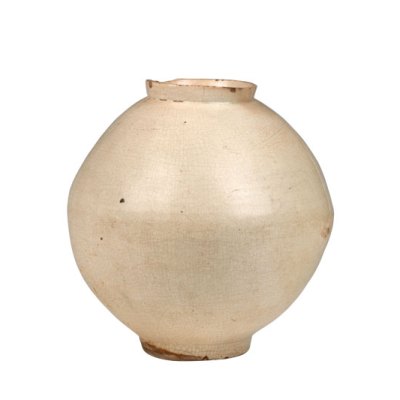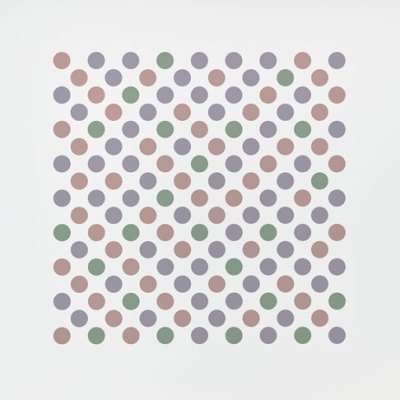One of the most striking and famous natural wonders on the Korean peninsula, the Diamond Mountains, or Mount Geumgang, has long been a subject in literary and artistic traditions. When I initially conceived of an exhibition on this theme, it was to be an all-loans show, since the Met did not own a single work on the subject. Indeed, few collections in North America boast this material. So it was exciting to have the opportunity, rather unexpectedly, to purchase a landscape painting of the site at auction in the spring of 2017. This was less than a year before the exhibition was set to open – a little late in the game, as we usually plan exhibitions many years in advance. But what a coup it was to be able to add this piece, not only to the checklist but to the museum’s collection! A panorama both grand and intimate, it depicts the luminous, sometimes fantastical topography of the western region of the mountains. The combination of gently-rolling earthy hills and glimmering, jagged peaks is a signature feature, captured beautifully in this painting.
The painter, Sin Hakgwon (1785–1866), was a literati artist of the 19th century; just a handful of extant works by him have been identified, although recent scholarship by the Korean art historian Yi Yeongsu has brought more attention to Sin and his oeuvre. I was pleased to find this unpublished work by the artist (it had been in a private collection on the West Coast). Interestingly, this recent addition to the Met’s collection has what I’m affectionately calling a fraternal twin: a second landscape of remarkably similar composition and style in the Jordan Schnitzer Museum of Art at the University of Oregon. In fact, I had visited that museum to view and study its painting, an eight-panel screen, in the summer of 2016. Identical inscriptions on both images, written by the artist himself, detail Sin’s attempt to replicate an older painting of the Diamond Mountains by his revered idol, the 18th-century master-painter Jeong Seon (1676–1759) – significant examples of whose work will also be on view in this exhibition. As alluded to in the inscriptions, Sin’s homage to Jeong was a way of capturing, through his brush, a place he longed to visit but never could. And in doing so, it would seem that Sin made more than one version of his inspired ode to Jeong and the mountains.
Mount Geumgang (three panels of eight), (1861), Sin Hakgwon. Amorepacific Museum of Art, Seoul

The exhibition will also include another work by Sin, from the collection of the Amorepacific Museum of Art (APMA), Seoul. I am grateful to my colleague and long-time friend, Jeon Seung-chang, director of the APMA, for sharing this delightful piece, which the museum acquired a few years ago. It has not been displayed or published before and will be making its public debut in the exhibition at the Met – and what a privilege it is to be able to feature it. For this show the APMA has mounted the eight loose leaves as a small, eight-panel folding screen. Unlike the Met’s landscape, which comprises a continuous composition, this screen features independent vignettes and each panel shows a scenic spot in and around the Diamond Mountains. Sin’s signature style – especially the rapid strokes of double lines delineating the sharp, rocky peaks for which these mountains are so famous – is on full view. He has added human travellers (albeit drawn cursorily, as is his manner) to the scenery, which adds an element of narrative to the painting: who are these people who have climbed to the top of Biro Peak, the summit of the Diamond Mountains? Their presence is incredibly surprising, as the convention is to illustrate this peak unscaled. In another scene, the sightseers and horses, rendered in cartoonish figures with minimal detail, infuse the scene with light-heartedness.
The Diamond Mountains have long been a source of fascination for Koreans. Given their location in today’s North Korea, their accessibility has fluctuated wildly over the course of the modern era. Many artists have managed to travel to the region at various times and produced their own visual interpretations. Yet like the 19th-century painter Sin, many have imbued their works with a sense of longing – to set foot anew in the land so familiar yet just out of reach. My guess is that many of the visitors to this exhibition at the Met will not have been to the Diamond Mountains. Whether or not they have direct experience of this dramatic landscape, I hope that the deeply evocative imagery they encounter in the museum’s Korean Gallery will provide a visual experience layered with beauty and revelation.
‘Diamond Mountains: Travel and Nostalgia in Korean Art’ is at the Metropolitan Museum of Art, New York, from 7 February until 20 May.
From the February 2018 issue of Apollo. Preview and subscribe here.


